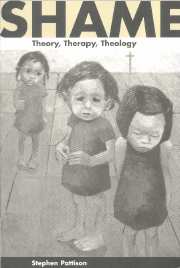Book contents
- Frontmatter
- Contents
- Preface
- Introduction
- PART I APPROACHING SHAME
- PART II ENCOUNTERING SHAME
- Overview of Part II
- 3 The ecology of shame
- 4 Chronic shame
- 5 Some effects and implications of chronic shame
- 6 Aspects of the socio-historical significance of shame
- 7 Dealing with shame: the task of integration
- Summary: towards a working understanding of shame
- PART III SHAME AND CHRISTIANITY
- Epilogue
- Bibliography
- Index
6 - Aspects of the socio-historical significance of shame
Published online by Cambridge University Press: 05 June 2012
- Frontmatter
- Contents
- Preface
- Introduction
- PART I APPROACHING SHAME
- PART II ENCOUNTERING SHAME
- Overview of Part II
- 3 The ecology of shame
- 4 Chronic shame
- 5 Some effects and implications of chronic shame
- 6 Aspects of the socio-historical significance of shame
- 7 Dealing with shame: the task of integration
- Summary: towards a working understanding of shame
- PART III SHAME AND CHRISTIANITY
- Epilogue
- Bibliography
- Index
Summary
[M]en do not usually define the troubles they endure in terms of historical change and institutional contradiction. The well-being they enjoy, they do not usually impute to the big ups and downs of the societies in which they live … The sociological imagination enables its possessor to understand the larger historical scene in terms of its meaning for the inner life and the external career of a variety of individuals … The sociological imagination enables us to grasp history and biography and the relations between the two in society.
(Wright Mills 1970: 9–12)Shame may well be the most socially significant of all the phenomena that are commonly conceived as emotions. It is a socio-cultural phenomenon that reflects and refracts wider social trends and relationships. It helps to define social boundaries, norms and behaviours and signals the state of social bonds (Scheff 1997), as well as providing a powerful tool of social conformity and control. Thus shame is an indispensable and necessary part of the socio-emotional architecture of any social order. This does not prevent it from being a painful, difficult and alienating experience for some individuals and groups in society. Nor does it prevent the exploitation of shame for purposes of power and control by other individuals and groups.
There is a close reciprocal relationship between various kinds of social structure and organisation and different kinds of individual personality structure and disorder (Western 1984). Personalities and intimate relationships are shaped by, as well as shaping, macro-social structures (Wright Mills 1970; Scheff 1990).
- Type
- Chapter
- Information
- ShameTheory, Therapy, Theology, pp. 131 - 153Publisher: Cambridge University PressPrint publication year: 2000



